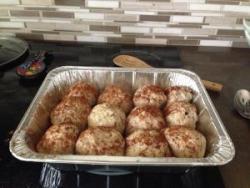
Firstly, I've just created and posted a full 2015 Omer calendar, in color and black and white that you can print out, with each of the Kabbalists' pairs of qualities (sephirot) of the Tree of Life listed and explained. And, before the sun sets today there is still time for today's Day Three Omer practice of Tiferet sheh b'Chessed—Tiferet is the Beauty of Balance, our harmonizing the opposites of restraint and flowing within the embrace of Chessed--Lovingkindness. While contemplating this pair of sephirot from my perch on the Tree of Life, an email binged and reflexively I looked at it. What was there?
As dean of the Reclaiming Judaism distance-learning program in Jewish Spiritual Education, I sometimes help our current students—teachers learning to be Maggid-Educators, find a story for a situation where they are stumped. One called today to ask for a story that shows some way in which the concept of keeping kosher matters. How, I wondered, might this connect to the beauty of balance within lovingkindness? Restraint and flowing, being embraced by pure love?
So let me tell you a story. I was serving as a cruise ship rabbi for the Passover seders. As is typically the case, nothing was really kosher for Passover on the ship, no less kosher in general. Even so, the chef and I created our vision of a kosher-style meal for the seder, plus the kosher wine, gefilte fish and matzah that she had ordered in advance. As guests arrived for the seder, I explained the situation regarding kosher on the ship, including that we had been careful not to use anything dairy in the meat meal. A hand shot up—and a teenager asked, "Why bother with that if nothing is really kosher anyway? It's all the ship's pots and regular dishes, isn't it?"
How would you answer?
I prayed for guidance--what to say? How to explain?
And a response came through that I'd never seen or heard anywhere. So I told them:
"Mothers give milk, it is life itself for young mammals. Milk is life given and meat is life taken away. [The extremes of chessed and gevurah.] In Judaism, to emphasize the preciousness of the gift of life we separate milk and meat as a spiritual practice that combined throughout the days of our lives opens our hearts [tiferet] to emphasize the preciousness of life. I hope you will appreciate the spirituality of this practice while joining me in wrapping this seder and all of us—strangers until tonight-- in lovingkindness and acceptance as we all having different ways of approaching Judaism. Just as some of the spiritual portals in the seder will come through my learning and experiences, please feel free to share some of yours."
The teen responded immediately: "Wow. I never imagined there could be a meaningful explanation. So where is there a sweet potato on the seder plate next to the orange?"
Ah, the pascal yam. We'll get to that very soon.
Now, in view of the tradition of adding the ana b'koakh prayer to your omer, here is a link to a powerful soft melody for the ana b'koakh prayer sung by Rabbi David Seidenberg from his inspiring resource-rich website, Neohasid.org.
And, a transliteration and interpretation by Rabbi Shifra Tobacman of the prayer for each day's Omer practice:

(Traditional) Baruch ata Adonai Eloheynu melech ha-olam asher kid’shanu b-mitz’votav v-tzivanu ahl s’firat ha-omer.
(Feminized) Aht brucha Shechina eloheynu chey ha-olamim asher kidash’tanu b-mitz’voteyha v-tziv’tanu ahl s’firat ha-omer.
We bless the Source of time and space that summons us to holy action and instructs us on the counting of the omer.
Today has been Day Three of the Omer.